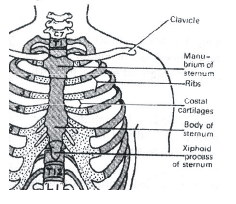31 Years NEET Previous Year Questions: Locomotion & Movement - 1 - NEET MCQ
15 Questions MCQ Test - 31 Years NEET Previous Year Questions: Locomotion & Movement - 1
Select the correct statement with respect to disorders of muscles in humans [NEET Kar. 2013]
The H-zone in the skeletal muscle fibre is due to : [NEET 2013]
Select the correct statement with respect to locomotion in humans : [NEET 2013]
The characteristics and an example of a synovial joint in humans is : [NEET 2013]

Which one of the following pairs of chemical substances is correctly categorized? [2012M]
Select the correct statement regarding the specific disorder of muscular or skeletal system :- [2012]
Three of the following pairs of the human skeletal parts are correctly matched with their respective inclusive skeletal category and one pair is not matched. Identify the non-matching pair. [2011M]

Elbow joint is an example of: [2009]
In human body, which one of the following is anatomically correct? [2007]
Which statement is correct for muscle contraction? [2001]
What is sarcomere? [2001]
The joint found between sternum and the ribs in humans is [2000]
Total number of bones in the hind limb of man is[1998]
Which is part of pectoral girdle? [1994]
Which ion is essential for muscle contraction? [1994]















